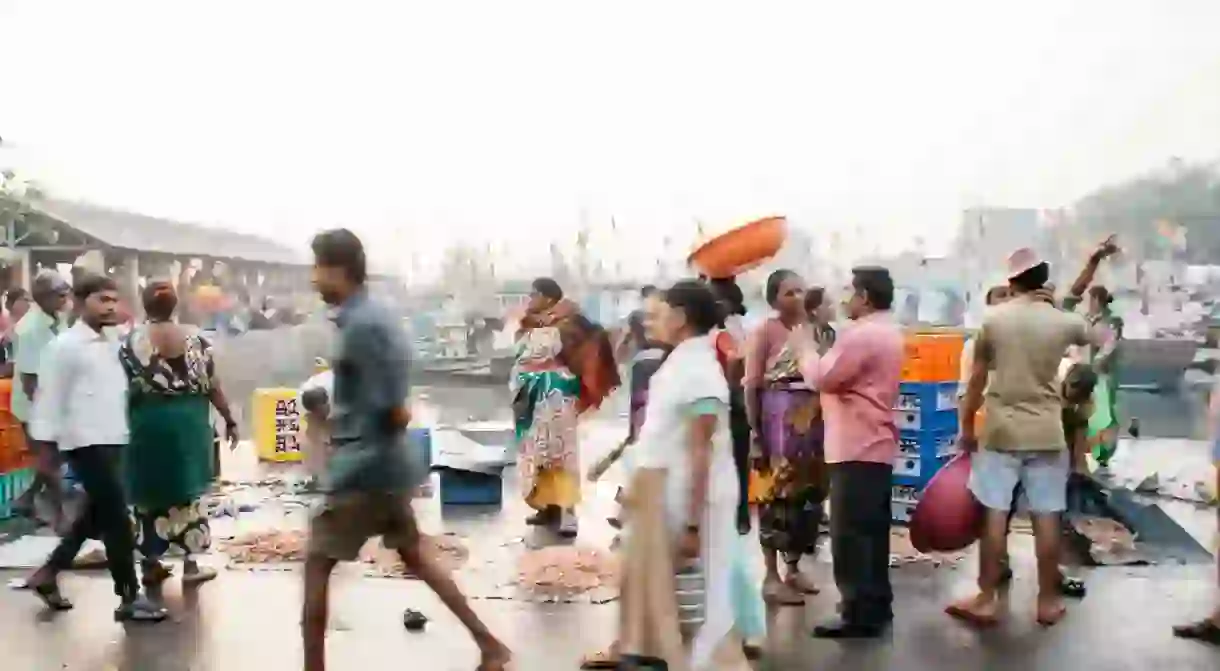Sassoon Docks: Bustling Local Life in One Of Mumbai's Oldest Fishing Villages

Sassoon Docks in Mumbai has always been an area of hustle and bustle, just like it is today. But there was a very different kind of trade that was based there in its heyday, when it helped to establish the cotton trade. Today, the docks are famous for fish. While most people in Mumbai are still sleeping, people at the docks begin their day before dawn, to catch fish, and by 9am, while some of us are only just starting our working day, they are almost finished with theirs! These photographs show a glimpse of life at Sassoon Docks
Sassoon Docks is named after the Sassoon family. David Sassoon’s son, Albert Abdullah, commissioned the docks to be built and it became the first commercial ‘wet dock’ in the country. The odour from Sassoon Docks, today, can be noticed from miles away. An eye-catching, grand entrance creates the impression that you are about to enter a fortress.




David Sassoon was the treasurer of Baghdad who migrated to Mumbai in the 19th century from Baghdad. Eager to set up a business and trade with China in cotton and opium, he had to compete with the well-established Parsis in Bombay at that time. The original inhabitants of the reclaimed land are the Kolis (Maharashtrian fishermen) who still live there. Sassoon Docks brings in more than 20 tonnes of seafood to the city!




The area is definitely not for the faint-hearted – the smell of fish and fresh blood all over the place could well make you feel nauseous. Some of the seafood brought in at the docks are pomfret, blue crabs, prawns, shrimp and baby sharks. Women huddle on the floor and chat endlessly while they shell prawns and scale fishes.




At the Sassoon Docks, the fish is sold by auction. The auctioneer keeps piles of fish in front of him and utters numbers that the wholesalers know off by heart. While the auctioneer urges his audience to buy the pile, the buyers crowd round it and check the quality. Only wholesalers are allowed at this auction.




Within an hour of the auction, the chaos comes to an end, only for it to repeat the following day. With women trying to sell their stock, calling out to you saying ‘taai’ (sister), carts after carts of fishes being transported from one truck to another, it feels like everyone at Sassoon Docks has a job to do, and they’re in complete harmony with everyone else.



Unfortunately, scientists believe that if indiscriminate fishing continues at the current rate, we will have no seafood left by 2050. So, Sassoon Docks’ fishing life might become a tale of the past. These days, swanky air-conditioned supermarts are replacing the traditional outdoor markets.

















